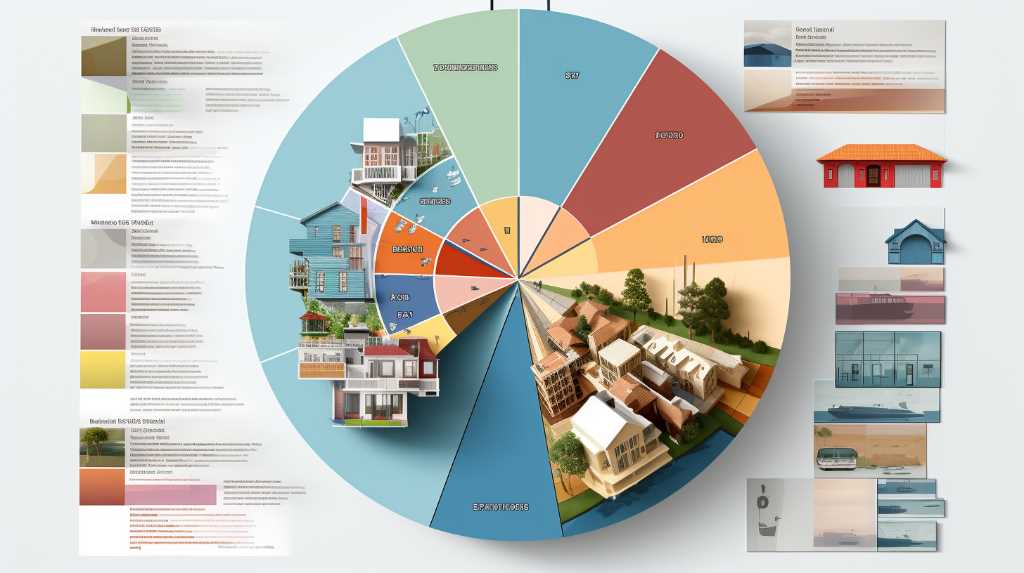How Does Investing in Real Estate Contribute to Portfolio Diversification?

Why does Investing in Real Estate Contribute to Portfolio Diversification?
Just as the wise Odysseus charted different courses to navigate treacherous seas, you too can steer your financial journey towards greater security by diversifying your portfolio through real estate investment.
By including property in your asset mix, you’re not putting all your eggs in one basket. Real estate typically marches to the beat of its own drum, separate from the stock market’s ups and downs, providing a cushion during market volatility.
What’s more, it can serve as a steady stream of passive income through rent, giving you the financial breathing room you crave.
This strategy doesn’t just spread your risk—it can also be a hedge against inflation, as property values and rents tend to rise with the cost of living.
So, by investing in real estate, you’re taking command of your financial freedom, one plot of land at a time.
Key Takeaways
- Diversifying across different real estate sectors and locations helps to lower overall risk and increase portfolio diversification.
- Adding real estate investment trusts (REITs) to a portfolio can provide diverse real estate revenues and enhance portfolio returns.
- Real estate investments provide a reliable stream of cash flow and serve as a cornerstone for generating consistent income.
- Investing in real estate can act as a shield against inflation and provide asset protection and growth.
Risk Mitigation Strategies
You can significantly reduce your investment risks by strategically diversifying across different real estate sectors and locations. This approach serves as one of the most effective asset risk mitigation strategies, allowing you to navigate market volatility with greater agility. By choosing to diversify within residential, commercial, and industrial properties, you’re not just tied to the fortunes of a single sector. This can significantly lower your overall risk.
Engaging with alternative investments in various geographical markets further shields you from regional downturns. You’re not at the mercy of local economic shifts; instead, you’re free to capitalize on growth wherever it occurs. Moreover, adding real estate investment trusts (REITs) to your portfolio offers you a share in diverse real estate revenues without the hassle of direct property management.
Enhancing Portfolio Returns
Diversification in your real estate portfolio not only mitigates risk but also boosts your potential for higher returns amidst various market conditions. When you diversify your portfolio, you’re not just playing defense; you’re positioning yourself to capitalize on a range of opportunities.
Real estate investments often serve as the cornerstone of a diversified portfolio, offering a unique combination of capital gains potential and steady income streams from rental properties.

It’s essential to understand the dynamics of the market and adjust your strategy accordingly. In times of crisis, for instance, boosting your allocation in real estate and infrastructure can be a smart move. This flexibility is key to maximizing returns while keeping risks in check.
Cash Flow and Income Stability
Investing in real estate can anchor your portfolio with a reliable stream of cash flow, bolstering its resilience against market volatility. By adding real estate assets to your mix, you’re not just investing; you’re setting up a foundation for passive income that can provide freedom and security.
Rental properties serve as a cornerstone for this strategy, consistently generating income through tenant payments.
When you diversify into real estate, you’re not solely relying on the ebb and flow of the stock market or other investments that may be more sensitive to economic changes. Instead, you’re tapping into a source of stable income. A well-managed real estate investment portfolio can deliver continuous cash flow, making it easier for you to plan your financial future with confidence.
Effective property management is key to maximizing the potential of your investments. This means ensuring your properties are well-maintained, tenants are satisfied, and that you’re consistently generating income. With these elements in place, real estate can provide a predictable, steady cash flow that complements the more volatile elements of your investment strategy.
As you enjoy the stability and freedom that come from these steady returns, it’s worth considering another significant advantage of real estate: its potential to hedge against inflation. Let’s delve into how this can further fortify your financial freedom in the next section.
Inflation Hedging Benefits
Real estate investments can act as your shield against inflation, ensuring that at least part of your portfolio is anchored in assets that typically appreciate or maintain their value as the cost of living rises. By diversifying your real estate portfolio, you’re not just spreading your wings across different asset classes; you’re also securing a piece of freedom. Real estate investing isn’t just about owning a plot of land or a building; it’s about smart asset investments that mirror the resilience of your spirit.
Inflation hedging benefits of real estate are significant, as properties often increase in value when inflation takes its toll on other types of investments. Including Real Estate Investment Trusts (REITs) in your portfolio allows you to reap these benefits without directly managing properties. REITs provide exposure to a variety of real estate sectors, further strengthening your inflation defense.

Investing in different types of real estate and infrastructure offers additional layers of protection. These alternative assets typically keep pace with or exceed inflation rates, providing stable cash flows and a bulwark against the eroding effects of rising prices. It’s about portfolio diversification that aligns with your pursuit of financial autonomy.
Let’s pivot to how these assets don’t just defend your wealth but also contribute to asset protection and growth.
Asset Protection and Growth
By investing in real estate, you’re not only hedging against inflation but also fortifying your portfolio with assets that have a history of steady appreciation and rental income, contributing to both protection and growth of your wealth. Real estate properties stand as tangible assets that can serve as a safe haven when markets are volatile, ensuring you maintain a grip on your financial freedom.
Diversifying your real estate portfolio is a savvy move that can spread risk across different asset types and locations. Whether you’re a seasoned real estate investor or just starting out, including Real Estate Investment Trusts (REITs) or direct property investments in your arsenal can bolster your defense against the unexpected. These investment strategies are tailored to suit your risk profile, allowing you to navigate the economic landscape with confidence.

Asset protection and growth are paramount for you to safeguard and expand your wealth. By incorporating real estate into your investment mix, you’re not just parking your funds; you’re actively cultivating a garden of opportunities that can thrive over time. The key is to align your real estate ventures with your desire for financial liberty, ensuring that each property adds a unique value to your overall mission for portfolio diversification and resilience.
Frequently Asked Questions
Is Real Estate a Good Way to Diversify Your Portfolio?
You’ll find real estate boosts market stability in your portfolio through asset allocation, offers risk reduction, acts as an inflation hedge, provides tangible assets with geographic spread, and generates rental income amidst economic cycles.
How Do Investors Use Real Estate to Grow a Portfolio?
You’re expanding your financial horizons by investing in real estate, taking advantage of REITs, analyzing market trends, and leveraging location. Your portfolio blooms with rental yields, equity growth, and the steady stream of cash flow.
What Is Property Portfolio Diversification?
Property portfolio diversification means you’re spreading investments across types, locations, and economic cycles to mitigate risks and tap into different market dynamics, ensuring your asset allocation captures diversification benefits despite liquidity and tax implications.
Which Investment Strategy Will Increase the Diversification of Your Portfolio?
You’ll enhance your portfolio’s balance by tweaking your investment mix, aligning with your risk management strategies, and considering correlation factors to smooth out market cycles and volatility for greater return potential and tax advantages.
Conclusion
By embedding real estate into your portfolio, you’re not just cushioning against market swings; you’re potentially bolstering your returns.
You’ll enjoy the rhythm of regular rental income, adding a layer of financial stability.
As inflation ebbs and flows, your investment stands resilient, often gaining value.
It’s about protecting what’s yours and nurturing growth, ensuring that your financial foundation is as diverse as it’s dynamic.
Invest wisely, and watch your portfolio thrive across the board.
Why Is Diversification Key For Long-Term Success In Real Estate Investing?



One Comment
Comments are closed.